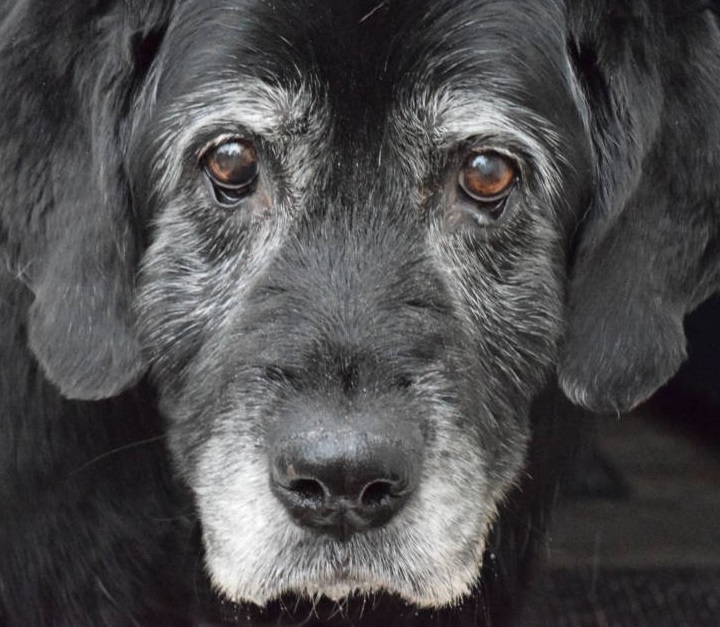Caring for An Aging Dog

When is a dog old? It is commonly held that a dog lives 7 years for every year that we do. However, this serves as only a very rough guide when calculating a dog's age. Dogs grow up very rapidly in their early years of life, and then slow down. A one-year-old dog is similar to a 15-year-old human teenager. At age 6 it is approximately 40 years in human terms. By 12 it is elderly, and at 15 it is equivalent to an 80-year-old.
Small breeds such as terriers and poodles tend to live longer than large ones. They are still fully active at 13 and 14 and will often survive to 16 or 17. Giant breeds such as Great Danes and Wolfhounds begin to slow down by 5 years and rarely live to more than 8 or 9. Naturally, there are exceptions to these rules. For example, the small Cavalier King Charles Spaniel lives only 9-13 years on average because of its genetic predisposition to heart disease.
Older dogs have a tendency to become overweight. Because they have fewer interests to distract them, they attach even more importance to eating. But because they are less active, they need fewer calories. Obesity in the older dog is highly damaging to joints, muscles, heart, and lungs, and increases the risk of diabetes and tumors. Have your dog weighed regularly (at least every 6 months), so that any weight gain can be spotted promptly and the diet “fine-tuned” to suit the dog's requirements. There are several ways of cutting down on calories. You can give less of the usual food, or you can switch to a lower calorie food and give the dog the same amount. If it becomes very greedy, feed it more often, but give it smaller portions. Weigh the food carefully, and don't just dole it out, so that you can be sure it is getting its daily quota and no more.
A healthy diet for the older dog should include less protein than before, but it should be of high quality (red meat, fish, poultry). It should contain more fiber (bran, vegetables, etc.) to prevent constipation and be low in fat and salt for a healthy heart. It is a good idea to switch to a specially formulated commercial diet for the older dog. Keep an eye on how much your dog is drinking, as excessive thirst can be a first sign of ill health in old age.
Age-related Conditions
Gray hair, reduced vision or hearing, slight stiffness in the morning, less eagerness to play, and increased sleep are all normal signs of old age. Some older dogs become quite irritable, especially when disturbed by younger dogs or children. Make sure your pet's wish for peace and quiet is respected. If its behavior changes rapidly, consult your veterinarian without delay.
Do not force an older dog to take prolonged or strenuous exercise, but provide shorter, gentler strolls more often to help keep old legs supple. Stiffness in old age usually results from osteoarthritis, with degenerative changes in the joints. Relieve the symptoms by restricting exercise, putting the dog on a slimming diet, and providing a soft mattress. Aspirin can help pain in mild cases, but check with your vet first, who may prescribe anti-inflammatory drugs.
Breathlessness in an older dog, combined with a reluctance to exercise and a cough, could indicate incipient heart and lung failure. Superficial lumps and bumps on the skin often increase in number and size. Most of them are simply fatty lumps and warts, but always get them checked by the vet. An elderly dog may need to urinate more frequently, especially if it is drinking more. It will have less warning of when it has to go, so remember to let it outside more often.
Tooth decay and periodontal disease are common in old age, and a painful tooth or sore gums may lead to a sudden loss of appetite. Other signs are bad breath, discolored teeth, and bleeding gums. Regular teeth brushing throughout your dog's life is the best protection you can give.
Needs of the Older Dog
- Food should be tasty and digestible but contain fewer calories. A high-fiber, low-sodium diet can be helpful.
- Grooming is even more important now that your dog's spine is becoming less flexible and cannot groom itself. Use a softer brush as your dog's coat gets thinner and its skin less robust.
- Bedtime comfort can be provided by a thicker mattress, which will be easier on arthritic joints.
- Massage stiff joints, especially first thing in the morning, to keep your dog active.
- Exercise in moderation. Your dog will tell vou when it's time to come home.
I've noticed that my 13-year-old Yorkshire Terrier, Twinkle, has a milky-looking eye. Is this normal?
The eyes of older dogs often appear cloudy due to changes in the lens and retina that occur in old age. But cloudiness could also indicate a developing cataract. Yorkshire Terriers have an inherited propensity to cataracts, so seek advice from your veterinarian as soon as possible.
My Boxer, Henry, who is nearly 10, is spending more and more time asleep. Is something wrong?
Older dogs spend increasing amounts of time asleep. As 10 is a good age for a Boxer, there's probably nothing to worry about, especially if Henry is showing no other signs of ill health.
My crossbreed, Tinka, is visibly aging. Where can I find out how best to look after her?
Many veterinary hospitals run geriatric clinics you can go to for advice on the particular needs of the elderly dog and regular checkups.




Leave a Reply